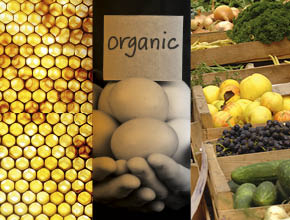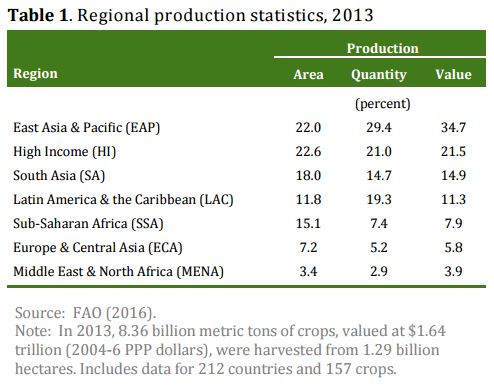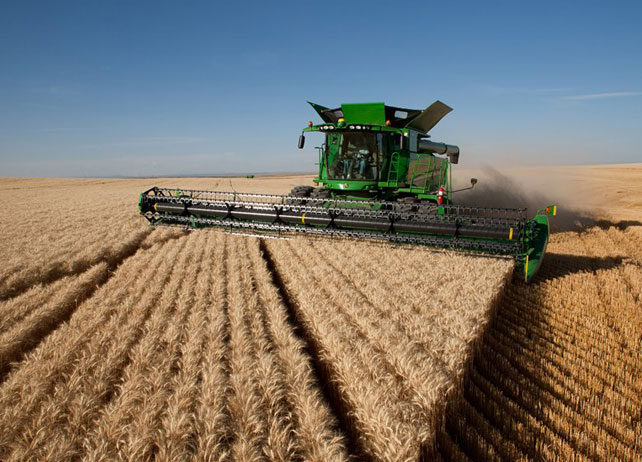Current State of Investments in Agriculture
This report summarizes the state of investment activity in the Agricultural Industry. It will focus on trends relating to Sustainable Systems development, as well as new technology which might be applied to increase yield and/or quality of the food produced in the US.
“Agriculture” is a widely defined industry. It spans from the mining industry through to the manufacturing sector, production, processing, and distribution networks which derive most of their gross receipts in support of, or in the process of growing food.
In terms of this report, the primary focus areas will be centered in the following areas:
- International Agriculture
- Domestic Production Systems in the U.S.
- Agri-Business Infrastructure
1. International Agriculture
Agriculture in developing countries is considered a significant area of opportunity for investments in the Food and Agricultural Industry. For example, in Africa, Forbes reports: “Seventy percent of the world’s uncultivated arable land is on the continent, according to Sara Menker, the founder of Gro Intelligence, an agricultural data company with offices in New York City and Kenya.” The People’s Republic of China is actively buying up land on that continent in huge quantities. With the world’s population demanding we find more arable land, and/or significantly increase production per acre; regions like the African landscape could be a significant production source. In order to see those land investments come to fruition, there needs to be a significant increase in developing the infrastructure which is far behind the developed countries of Europe and North America.
Since Europe is an important customer of African Agriculture, it would follow that as Africa attempts to develop its markets, it will need to adhere to the EU’s most stringent regulations relating to the reduction of chemical-based crop protection and fertilization materials. Investments in Sustainable Systems that incorporate new technologies in equipment and information management systems to support an efficient and viable Agriculture in Africa and other developing countries will be a significant area of opportunity in the near future.
Many investors are viewing sub-Saharan Africa and other countries in the Equatorial belt as areas of opportunity. In this analysis, Sub-Saharan Africa accounted for 15.1 percent of the world’s total harvested area that same year, but only 7.9 percent of the total value of crop, a reflection of lower yields and lower valued crops. As technology and education comes to the region, the potential to significantly increase crop yields is significant.
The land of opportunity isn’t limited to Africa. In Latin America, foreign investments have exploded since the 1990’s. In total, according to the Food and Agricultural Organization of the United Nations, total investments in Latin America have trended as follows:
| Year | $ (in US millions) |
| 1990 | 110,547 |
| 2000 | 502,487 |
| 2008 | 1,181,615 |
Source: Analysis of International Investments in the Agricultural Sector of Brazil
See also:
The Biggest Opportunity in Agriculture May be in Africa- And China is Seizing It (Dan Alexander, Freelance Writer contributing to Forbes.com)
Triodos Organic Growth Fund – Triodos investments in European Organic Agriculture
Land Commodities – People-Planet-Profit
2. Domestic Production Systems – USA
Sustainable and Organic Systems:
Production Agriculture systems in the US are undergoing change at this time. Over the next several years, we will see the divergence of ‘conventional’ agriculture and ‘organic’ agriculture become less divided.

Photo: Investments in Organic Agriculture are expected to rise significantly across the world as consumer demand for Certified products and Sustainable Systems are growing at an unprecedented rate across developed countries. Source: www.triodos.com
Technologies driven by minimizing Environmental impact and in support of sustainable systems will continue being developed. Certified Organic Farming will continue to mature as a sector of the food production landscape.
According to the last Census of Agriculture (2012); Organic sales were growing in 2012, but still accounted for just 0.8 percent of the total value of U.S. agricultural production. Organic farmers reported $3.12 billion in sales in 2012, up from $1.7 billion in 2007. Look for both total sales and sales per farm to substantially increase in this category in 2017 as the USDA Certified Organic Program continues gaining numbers. Consumer demand for Certified Organic products has increased significantly over the past 5 years. The number of large operations (greater than $1,000,000 in sales/year) converting to Organic is steadily increasing to meet that demand. Expect this sector to be a major portion of Agricultural marketings; policy direction; and research & development in the future. Virtually every sector in Agriculture will be affected from the supply side to equipment innovation and food processing.
See also:
Farmland LP – “Farmland LP was formed in 2009 to demonstrate that large-scale sustainable agriculture is more profitable than the dominant model of commercial agriculture in the U.S. today. We strive to deliver superior risk-adjusted returns to our investors using sustainable land management practices that align the interests of investors, the environment, farm managers, consumers, the communities in which we operate, and future generations. It is foundational to Farmland LP that superior investments and sustainability are synergistic and not in conflict”
NewSeed Advisors Connects Investors to Sustainable Agriculture
Sustainable Agriculture Investment Poised to Surge – J Yoiro, Agroecology and Urban Agriculture Writer, Civil-Eats, 2009
Ecosystem Marketplace – Harvesting Investment Funds for Sustainable Agriculture
Sustainable Agricultural Systems Science White Paper – USDA
Urban Agriculture-Vertical and Indoor Agriculture
One of the key areas of investment happening in recent years relates to moving production closer to the consumer. With the advancements in lighting technologies and alternative energy sources, large investors are seeking out abandoned urban buildings and developing high tech systems located strategically so as to significantly reduce transportation costs.
As me already mentioned in a another newsletter, concurrently, hydroponic, aeroponic, and related systems are evolving at a break neck pace to step up to the production level needed to make these systems profitable.

Photo: Aero Farms illustration of an indoor hydroponic system. Production efficiencies, proximity to markets, conversion of abandoned buildings in urban locations, all support this technology.
Source: https://aerofarms.com
The indoor farming sector has grown to $4 Billion per year in the US, and analysts predict it will continue growing at a 30% per year growth between 2015-2020. Companies like Whole Foods are investing heavily into this sector so as to bring their produce closer to the marketplace and help address the ‘food desert’ problems across our cities. Privately held companies like AeroFarms, FarmedHere, and Green Sense Farms are all in the game, investing in systems development, operations, and marketing agreements so as to build off this emerging technology.
Some public companies include Urban Barns Foods Inc. (URBF) and Affinor Growers (RSSFF) (CSE:AFI), have early-stage operations, while mCig Inc. (OTC:MCIG) offers grow room design and consulting, yet there are no large and established pure-plays and only a handful of small start-ups that show promise. Expect this to change with franchising of the technology and engineering pieces being a big opportunity for investment.
See also:
Indoor Harvest Looks to Scale and Expand in 2016 – Yahoo Finance
Agrilyst – State of Indoor Farming – 2016
The big money of changing food and agriculture tech – Chicago Tribune
3. Agri-Business and Agricultural Technologies
The Agri-Business infrastructure of suppliers, service providers, and manufacturers are actively expanding into making Precision Agriculture more ‘precise’. The utilization of drones, variable rate technology, GPS mapping, and related industries have evolved and continue to. This group of information management technologies will not only continue to grow in the US, but will be expanding to developing countries with the continuous expansion of digitized soil mapping in Africa and other target areas for agricultural development.
See: Agricultural Technology Investment Rises to Record $25 Billion (AgWeb.com, a division of Farm Journal)
The evolution of Genetic Engineering, Genetically Modified Organism technology, and other related seed technologies will continue to increase exponentially; though will be under greater scrutiny as we move forward. Aside from food safety concerns, the concern over a disrupted gene pool, crop resistance to protection materials, and other ecological bases for criticism; the evolution of the seed production industry is the subject of much public scrutiny, as they are aligned to chemical crop protection companies like Monsanto, Syngenta, and others. What is interesting about the GMO debate is that it isn’t so much the environmental concerns and food quality concerns, but a matter of economics. The Seed sector, once populated with several dozen major players developing their own lines of seed has been whittled down to a handful of companies marketing the majority of the seed; and owning the intellectual property and genetic rights to the seed itself. How the government handles that in the future will be of interest to the investor and the market (the farmer). Look for non-GMO companies to increase in the future to meet the increasing pressure on the farmer to market their product without the use of GMO seed or crops.
Finally, in the area of Agri-Business and technologies, look for more investments in equipment that is geared to the Certified Organic Farmer. Of all the sectors of Production Agriculture, this group will make the biggest percentage jump when the numbers are in for the 2017 Census. Several of the ‘big ag’ companies of California, the South, and the Northwest are shifting a portion of their acreage to Organic to meet consumer demand; and along with this, there will be a high demand for field equipment technologies that enable the farmer to eliminate synthetic fertilizers and protectants, the most critical of which will be herbicides. Controlling weeds without them will require greater mechanization.
Resources used for this article and further reading suggestions:
Sales from Organic Farms up 72% – USDA Census Report – 2015
Indoor Farming offers Tech Investment Opportunities for the Future
Investors seeing farmland as safer bet than stocks – LA Times
The John Deere 625D Draper Platform increases combine productivity in small-grain and rice harvests.
The draper belt system ensures smooth, uniform feeding of crop to the feed drum and the combine feederhouse.
Ideal for harvesting crops where additional cutting platform productivity is desired.
The 625D has a true 25-ft cutting width, and the unique draper-style crop cutting system delivers the high-capacity feeding required of the high-capacity S-Series Combines.




